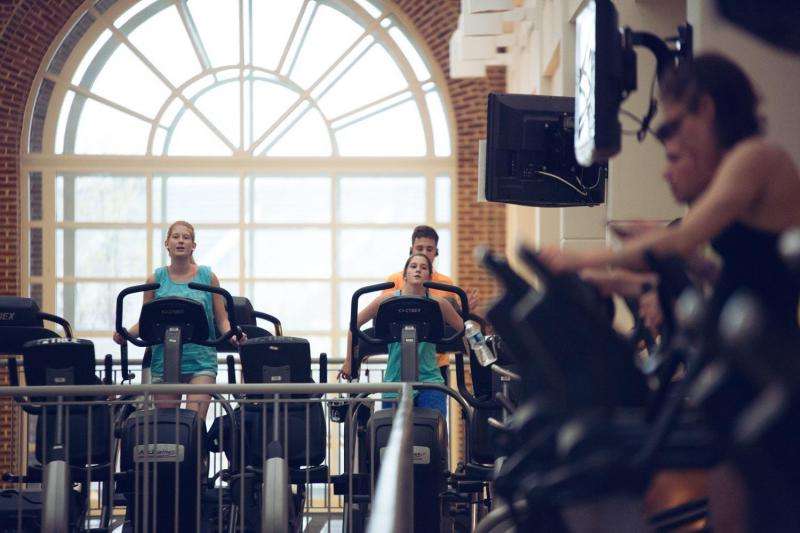Exercise can make cells healthier, promoting longer life, study finds

Whether it's running, walking, cycling, swimming or rowing, it's been well-known since ancient times that doing some form of aerobic exercise is essential to good health and well-being. You can lose weight, sleep better, fight stress and high blood pressure, improve your mood, plus strengthen bones and muscles.
"Whether muscle is healthy or not really determines whether the entire body is healthy or not," said Zhen Yan of the University of Virginia School of Medicine. "And exercise capacity, mainly determined by muscle size and function, is the best predictor of mortality in the general population."
But why? Yan might have some answers. He and colleagues at UVA are peering inside the cell to understand, at a molecular level, why that workout – like it or not – is so vital to the body. They found that one important benefit involves the cellular power plant – the mitochondria – which creates the fuel so the body can function properly.
Exercise Stresses Mitochondria
Yan and colleagues have completed a study in mice that, for the first time, shows that just one bout of moderate-to-intense exercise acts as a "stress test" on mitochondria in muscles. They discovered that this "stress test" induced by aerobic exercise triggers a process called mitophagy, where the muscle disposes of the damaged or dysfunctional mitochondria, making the muscle healthier. Yan compares exercise-induced mitophagy to a state vehicle inspection that removes damaged cars from the streets.
"Aerobic exercise removes damaged mitochondria in skeletal muscle," Yan said. "If you do it repeatedly, you keep removing the damaged ones. You have a better muscle with better mitochondrial quality. We clean up the clunkers, now the city, the cell, is full of healthy, functional cars."
How Exercise Removes Mitochondria 'Clunkers'
For this study, Yan and colleagues assessed the skeletal muscle of a mouse model where they had added a mitochondrial reporter gene called "pMitoTimer." The mitochondria fluoresce green when they are healthy and turn red when damaged and broken down by the cell's waste-disposal system, the lysosomes.
The mice ran on a small treadmill for 90 minutes and Yan's team observed mitochondrial stress (signs of "state inspection") and some mitophagy (towing of the clunkers) at six hours after exercise. Yan explained that exercise in these mice also stimulated a kinase called AMPK, which in turn switched on another kinase, Ulk1. These chemical reactions appear to be important in control of the removal of dysfunctional mitochondria.
"When its turned on, Ulk1 activates other components in the cell to execute the removal of dysfunctional mitochondria," Yan said. "It's analogous to a 911 call where a tow truck removes the clunkers. However, we still do not know how these activities are coordinated."
Some Mice Didn't Benefit From Exercise
Yan's lab also deleted the Ulk1 gene in mouse skeletal muscle and found that, without the gene, the removal of damaged or dysfunctional mitochondria is dramatically inhibited, suggesting a new role for the Ulk1 gene in exercise and mitophagy.
"Mice that were unable to do mitophagy did not have the benefit of exercise," explained study co-author Joshua Drake, a postdoctoral fellow in the Yan lab. "Even though, from an exercise standpoint, they still were able to run just as far as normal mice, they didn't benefit metabolically with training."
Drake pointed out that some people with type 2 diabetes don't respond to exercise, which is a growing clinical problem. He hopes that continued research in the Yan lab will lead to new discoveries to help these non-responders.
The findings have been published online by the scientific journal Nature Communications.
More information: Rhianna C. Laker et al. Ampk phosphorylation of Ulk1 is required for targeting of mitochondria to lysosomes in exercise-induced mitophagy, Nature Communications (2017). DOI: 10.1038/s41467-017-00520-9

















